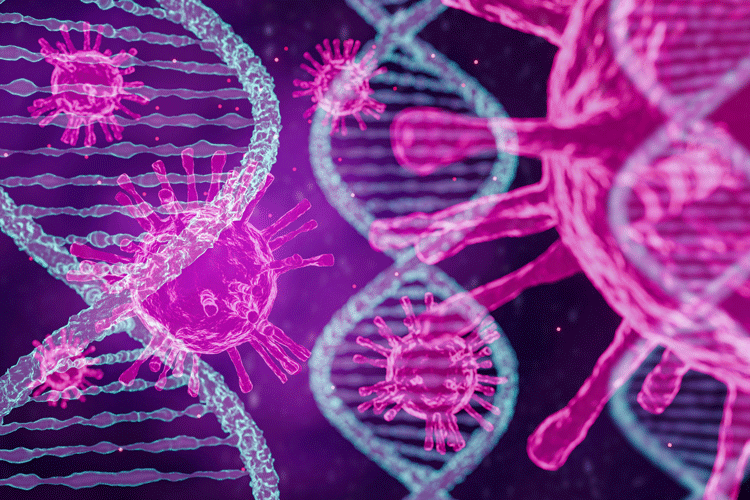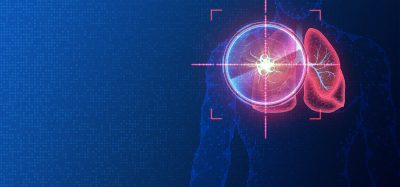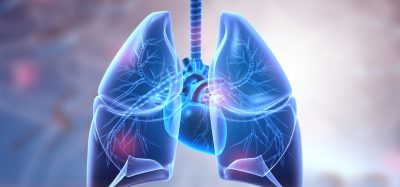Host pathways in coronavirus replication and COVID-19 pre-clinical drug target identification using proteomic and chemoinformatic analysis
Posted: 30 March 2020 | Joseph Steward (Moores Cancer Center) | 6 comments
The identification of host dependency factors mediating virus infection may provide key insights into effective molecular targets for developing broadly acting antiviral therapeutics against SARS-CoV-2 and other deadly coronavirus strains. Here, Joseph Steward highlights key findings of recent research.


The novel coronavirus SARS-CoV-2 is the viral pathogen responsible for the current COVID-19 pandemic, which began in late 2019 in the city of Wuhan, China. Upon the identification of the novel coronavirus in January 2020, Chinese scientists rapidly sequenced the viral genome and made the sequence information freely available,1 allowing the global medical and scientific community to rapidly design and deploy molecular diagnostics against the novel pathogen.
Despite the scientific community’s ability to quickly develop molecular diagnostics detecting SAR-CoV-2 and begin clinical trials with the existing antiviral compounds remedesivir and chloroquine, there are still currently no established therapies with proven clinical utility in treating patients with COVID-19.
However, using the genomic sequence, scientists in the lab of Nevan Krogan at the University of California San Francisco, US, took the first step towards identifying novel therapeutic drug targets against COVID-19 through comprehensive viral–human protein interaction analysis.2 This was followed by chemoinformatic identification of existing compounds that target proteins in the pathways identified through their protein interaction screen, which identified 66 druggable human proteins or host factors targeted by 69 existing US Food and Drug Administration (FDA)-approved drugs or compounds being investigated.2
SARS-CoV-2 biology and replication machinery: genome organisation and viral proteins expressed during the infection cycle
SARS-CoV-2 is a positive-sense, single-stranded RNA beta-coronavirus with a 30 kilobase genome that encodes viral proteins in up to 14 open reading frames (Orfs).1,2 At the 5’ end of the genome, a single Orf encodes a polyprotein that auto-proteolytically cleaves into 16 non-structural proteins (Nsp1-16) that form the replicase-transcriptase complex.2 The 16 protein replicase-transcriptase consists of multiple enzymes essential to viral genome replication, including the viral RNA-dependent RNA polymerase and other enzymes such as endo- and exonucleases essential to nucleic acid metabolism.2
SARS-CoV-2 is a positive-sense, single-stranded RNA beta-coronavirus with a 30 kilobase genome that encodes viral proteins in up to 14 open reading frames”
It is suspected that as many as 13 Orfs are expressed from the 3’ end of the viral genome, including four major viral structural proteins: Spike (S), Envelope (E), Membrane (M) and Nucleocapsid (N). Structural proteins of SARS- CoV-2 form the viral capsid that encapsulates the genome, while also facilitating entry to human cells through the human angiotensin converting enzyme 2 (ACE2) receptor.2
Lessons from SARS-CoV-1 and MERS-CoV: conserved viral replication machinery and identification of host pathways commonly utilised in coronavirus infection
Despite our limited knowledge of SARS-CoV-2, pathogenic coronaviruses have been widely studied since the SARS coronavirus outbreak of 2003 and the MERS (Middle East Respiratory Syndrome) coronavirus outbreak which began in 2012. While there are differences in both infectivity and mortality rates between SARS/MERS and the current SARS-CoV-2 virus, the genome size (30 kb) and organisation of replicase-transcriptase and structural protein Orfs used in all three viruses is highly conserved.3 Therefore, SARS and MERS research has already helped in identifying potential viral and host drug targets to block coronavirus replication.
Notably, research on MERS-CoV infection has identified host autophagy pathways, which includes mTOR-PI3K signalling, as essential host components in coronavirus replication.5 The host ubiquitin system also plays an important role in MERS-CoV utilisation of autophagy pathways during infection and research has shown that blocking specific kinases (SKP2) important in autophagy decreases MERS- CoV replication 28,000 fold in vitro.4
Other host pathways determined to be highly important in SARS and MERS-CoV replication include vesicle trafficking within the endoplasmic reticulum of host cells. It has been determined that the replicase-transcriptase machinery of the coronavirus assembles at the host endoplasmic reticulum (ER) and viral structural proteins assemble within the host ER, making it an essential cellular component and potential drug target to block both viral genome replication and capsid assembly in the formation of new virus particles during infection.3
Proteomic-chemoinformatic approach to COVID-19 host-pathogen drug target identification
Scientists in the Krogan lab used an affinity purification mass spectrometry proteomics approach to first screen all SARS-CoV-2 proteins against human cell lines to determine high confidence viral-human protein interactions.2 With the genome sequence of SARS-CoV-2 available, the Krogan Lab cloned, tagged and expressed 26 of 29 viral proteins in HEK293 cell lines.2 Viral proteins were then affinity purified using streptavidin magnetic beads and then after overnight digestion the purified proteins were sequenced using protein mass spectrometry.2 In total, 332 high confidence SARS-CoV-2 human protein-protein interactions were identified. Upon completion of the SARS-CoV-2 human protein interactome, chemoinformatics database searches were completed to identify all FDA-approved compounds or compounds in clinical and pre-clinical investigation that target host proteins identified in the screen.2
|
Host pathway in proteome interaction screen |
Corresponding SARS-CoV-2 proteins interacting with host pathway |
|
DNA replication |
Nsp1 |
|
Epigenetic and gene expression regulators |
Nsp5, Nsp8, Nsp13, E |
|
Vesicle trafficking |
Nsp6, Nsp7, Nsp10, Nsp13, Nsp15, Orf3a, E, Orf8 |
|
Lipid modification |
Spike |
|
RNA processing and regulation |
Nsp8, N |
|
Ubiquitin ligases |
Orf10 |
|
Host signaling |
Nsp8, Nsp13, N, Orf9b |
|
Nuclear transport machinery |
Nsp9, Nsp15, Orf6 |
|
Cytoskeleton |
Nsp1, Nsp13 |
|
Mitochondria |
Nsp4, Nsp8, Orf9c |
|
Extracellular matrix |
Nsp9 |
Source: Gordon, D et al. A SARS-CoV-2-Human Protein-Protein Interaction Map Reveals Drug Targets and Potential Drug Repurposing bioRxiv preprint doi: https://doi.org/10.1101/2020.03.22.002386
COVID-19 targets and pathways identified with existing FDA-approved drugs or compounds under pre-clinical investigation
The study’s authors identified 66 human proteins in host pathways targeted by 69 existing FDA-approved drugs or compounds currently being investigated.2 Notable host pathways shown to interact with SARS-CoV-2 during its replication include antiviral pathways in the innate immune response such as the stress granule protein G3BP1, a known antiviral protein that induces the innate immune antiviral response.2 This led the authors to hypothesise SARS-CoV-2 may have mechanisms to inhibit host innate antiviral immunity.2 Another important pathway the authors noted was the host ubiquitin system and the novel Orf10 of SARS-CoV-2 interacting with multiple members of the Culin 2 E3 Ligase E3 ligase complex.2 Mammalian viruses often utilise the host ubiquitin system in viral replication, leading the authors to suggest targeting the ubiquitin system with compounds such as the small molecule Pevonedistat in future pre-clinical investigation.2
With the 66 putative drug targets identified, the authors are now testing all 69 compounds in pre-clinical SARS-CoV-2 infection assays to determine their efficacy in blocking viral replication,2 aiding the global race to identify effective therapies to combat the current COVID-19 pandemic.
|
Existing drug classes targeting identified COVID19 host pathways |
|
Bromodomain (BRD) inhibitors |
|
CK2 inhibitors |
|
HDAC1/2 inhibitors |
|
mTOR inhibitors |
|
Nuclear export inhibitors |
|
Sigma factor inhibitors |
|
NEK9 inhibitors |
|
CEP250 inhibitor |
|
PPIAIMPDH2 modulator |
|
Translation inhibitors |
|
Viral transcription inhibitors |
|
ACE inhibitors |
|
Serine protease I inhibitors |
|
Inhibitors of mitochondrial translation |
Source: Gordon, D et al. A SARS-CoV-2-Human Protein-Protein Interaction Map Reveals Drug Targets and Potential Drug Repurposing bioRxiv preprint doi: https://doi.org/10.1101/2020.03.22.002386
About the author
Joseph Steward works at Moores Cancer Center at UCSD as part of the Clinical Research staff focusing on cancer genomics. Joseph also has previous experience in microbial genomics research at centres, including the J. Craig Venter Institute in La Jolla, CA. He is interested by applications of genomics in pre-clinical drug discovery and biomarker driven precision medicine trials.
References
- Lu, R et al. Genomic characterisation and epidemiology of 2019 novel coronavirus: implications for virus origins and receptor binding. VOLUME 395, ISSUE 10224, P565-574, FEBRUARY 22, 2020
- Gordon, D et al. A SARS-CoV-2-Human Protein-Protein Interaction Map Reveals Drug Targets and Potential Drug Repurposing bioRxiv preprint doi: https://doi.org/10.1101/2020.03.22.002386
- Kindrachuk, J et al. Coronaviruses: An Overview of Their Replication and Pathogenesis Methods Mol Biol. Author manuscript; available in PMC 2016 Jan 1.
- Nils C. Gassen. SKP2 attenuates autophagy through Beclin1-ubiquitination and its inhibition reduces MERS-Coronavirus infection Nat Commun. 2019 Dec 18;10(1):5770. doi: 10.1038/s41467-019-13659-4.
- Kindrachuk, J et al. Antiviral Potential of ERK/MAPK and PI3K/AKT/mTOR Signaling Modulation for Middle East Respiratory Syndrome Coronavirus Infection as Identified by Temporal Kinome Analysis Antimicrob Agents Chemother. 2015 Feb;59(2):1088-99. doi: 10.1128/AAC.03659-14. Epub 2014 Dec 8.
Related topics
Analysis, Analytical Techniques, Bioinformatics, Disease Research, Drug Discovery, Drug Targets, Proteomics, Research & Development, Targets
Related conditions
Coronavirus, Covid-19
Related organisations
University of California San Francisco, US Food and Drug Administration (FDA)
Related people
Dr Nevan Krogan









What about of modifying quinine (alkaloid)extracted from cinachon bark to increase pH so decrease replication of virus inside the cell
I have been researching this same question just not in detail as you explained it. This information would not be advertized.
Hi Eric- there’s a lot of great information in the 5 publications I referenced. Coronavirus replication isn’t a topic I have a background in really- but there’s been a lot of work that’s been done on SARS and MERS that is the foundation for understanding a lot of the biology of the new coronavirus
Hi Nour,
To my knowledge, the use of quinine extracts would not be an option because these treatments are not specific and it may decrease the PH in non-infected cells too.
3. Which enzyme do coronaviruses use to replicate inside the cells.
RNA dependent RNA polymerase (replicase)